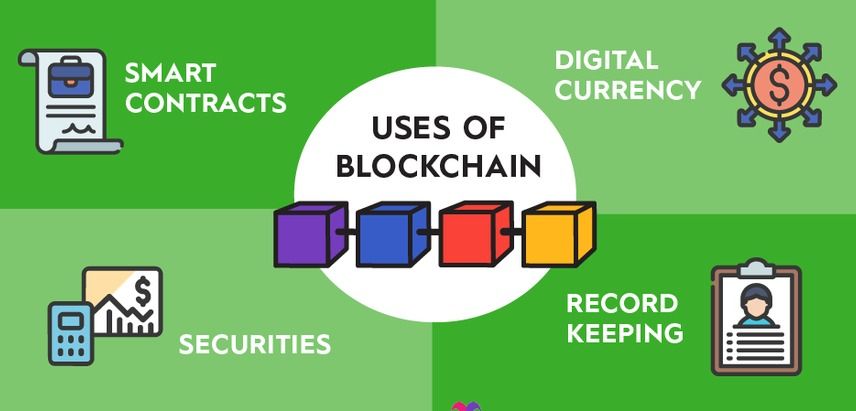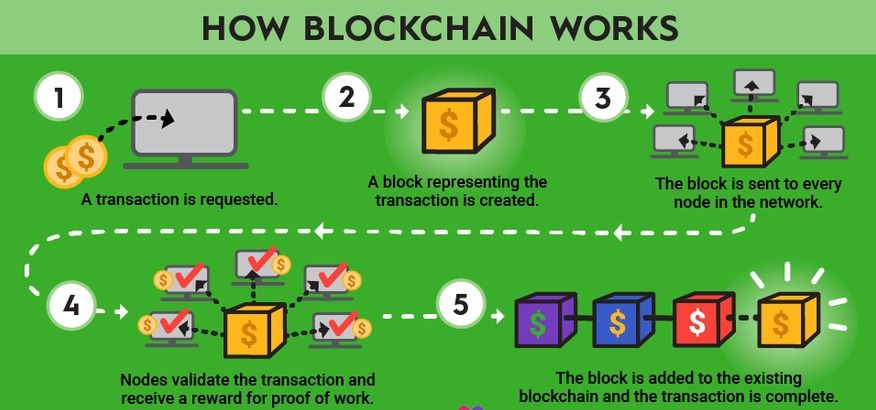Blockchains can manage any system that involves digital data points and/or transactions.


Which industries use blockchain?
- Finance and Banking:
- Cryptocurrencies and blockchain are disrupting traditional banking systems, enabling faster and more secure cross-border transactions.
- Healthcare:
- Electronic health records can be securely stored and shared on blockchain, ensuring data integrity and patient privacy.
- Government:
- Governments explore blockchain for applications such as secure identity verification, voting systems, and transparent public record management.
- Insurance:
- Blockchain streamlines insurance processes, including claims processing, fraud prevention, and smart contracts for policy management.
- Energy:
- Blockchain is used for transparent and secure energy trading, renewable energy certificate tracking, and grid management.
- Education:
- Academic credentials can be securely stored on blockchain, ensuring the authenticity of degrees and certifications
What is Blockchain Security?
Blockchain security refers to the measures and practices implemented to protect the integrity, confidentiality, and availability of blockchain systems and their associated data. Given that blockchain operates on a decentralized and transparent network, security is crucial to prevent unauthorized access, manipulation, and other potential threats. Here are key aspects of blockchain security
Why Does Blockchain Require Security?
Blockchain is an immutable ledger with no involvement of a third-party organization. It also uses cryptography to hide some details. So hackers find it almost impossible to tamper with the blocks. But there are some loopholes that allow the malicious users to perform malicious activities as blockchain networks are not immune to cyberattacks and fraud.
Blockchain penetration testing involves systematically assessing the security of a blockchain system to identify vulnerabilities and weaknesses that could be exploited by malicious actors. Here’s a detailed process for conducting blockchain penetration testing:
- Define Scope and Objectives:
- Scope: Clearly define the boundaries of the blockchain environment to be tested, including specific nodes, smart contracts, and network components.
- Objectives: Establish the goals and objectives of the penetration test, such as identifying vulnerabilities, assessing the resilience of the consensus mechanism, and evaluating smart contract security.
- Reconnaissance:
- Blockchain Architecture Analysis: Understand the target blockchain’s architecture, consensus mechanism, and overall design.
- Node Identification: Identify and enumerate nodes within the network, including validating nodes and mining nodes.
- Smart Contract Discovery: Identify and analyze deployed smart contracts on the blockchain.
- Testing Smart Contracts:
- Code Review: Conduct a thorough review of smart contract code to identify vulnerabilities such as reentrancy, overflow/underflow, and logical flaws.
- Static Analysis: Use static analysis tools to identify potential security issues within the smart contract code.
- Dynamic Analysis: Execute dynamic analysis by interacting with smart contracts to identify runtime vulnerabilities.
- Data Transmission
- Blockchain makes it easier for testers to make the encryption and decryption of data flawless because of its peer-to-peer architecture.
- API Testing
- PI testing is performed to keep a check on the interaction of the Blockchain application ecosystem. It is done to make sure that requests and responses sent by APIs are valid.
- Integration Testing
- Integration testing doesn’t ensure that different components of the blockchain talk to each other seamlessly. The need for integration testing arises due to the deployment of blockchain across parallel platforms.
- Exploitation
- This step is to identify points of entry or possible security flaws. This can be done manually by going through a list of common vulnerabilities and checking if they apply to your product by testing things such as Oauth-related Vulnerabilities, Cryptography, SQL Injection, XSS, etc. The exploitation phase involves getting sensitive information at every opportunity. This data often contains personal details which can be used in other later phases
- Reporting
- An effective penetration testing is incomplete without a detailed penetration testing report.
Consensus Mechanism Evaluation: Assess the resilience of the consensus mechanism against potential attacks, such as 51% attacks or network partitioning.


